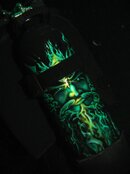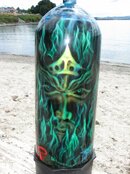marchand
Contributor
I was talking to a guy at the dive site a while back and he painted his tanks with this "cocktail" that they paint oil rigs with. It was tough as nails, much tougher that the paint on a faber tank. I'm not sure what is in the cocktail, but it might be worth looking into.





